
How a fraction of voters decide who runs Texas
Election years are supposed to be the time for democracy to shine. We’ll debate, we’ll campaign and then in November we’ll come together to decide which direction we'll swim for the next two to four years.
But in Texas, who’ll run the state is usually decided in the spring. And it’s a much smaller share of people who participate in those elections.

A yearlong Texas Tribune project on democracy. Read more.
That’s especially true in legislative and congressional races, thanks to gerrymandering and noncompetitive elections. Let’s take a look at the 2022 race in state House District 142 in Houston as an example of why.
That year, some local Democrats were angry at HD 142’s incumbent, Harold Dutton. As the Public Education Committee chair, Dutton had allowed a bill to advance that placed new restrictions on transgender student athletes in Texas. And he’d supported a state takeover of Houston ISD. With the backing of a coalition of progressive groups, Candis Houston mounted a challenge in the Democratic primary.
By winning the primary, Dutton moved on to a general election race against Republican Richard Varner.
Three times more people from HD 142 showed up to make their voices heard in the November general election that year. But Varner had dropped out before a single general election vote was cast. Even if he hadn’t, Dutton almost certainly would have won. District 142 is heavily Democratic — Joe Biden would have won it by 49.3 percentage points in 2020. For all intents and purposes, the race was decided in March.
That means that in a district where at least 36.4% of registered voters cast a ballot in 2022, less than 10% actually voted in the decisive election.
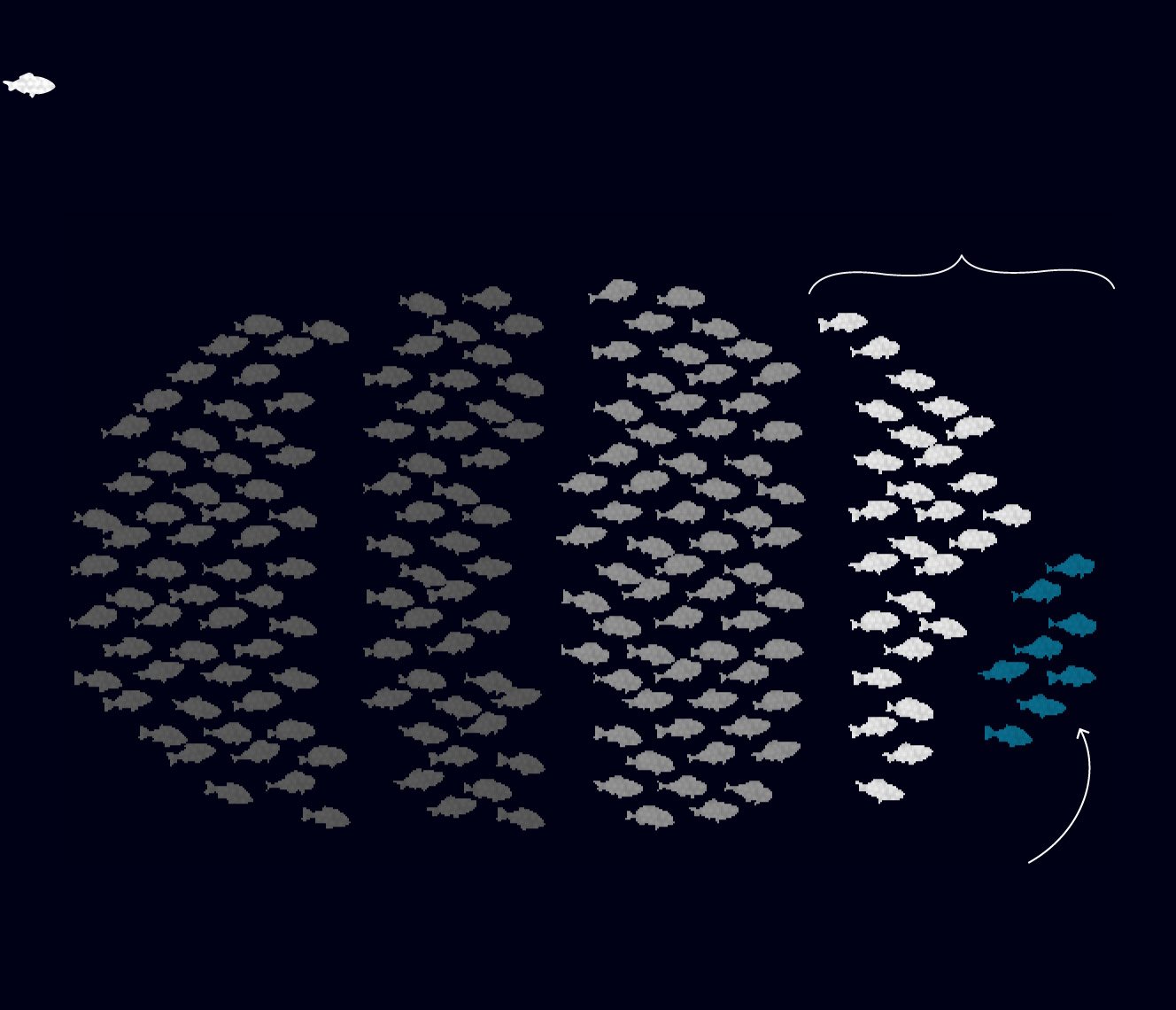
More people voted in November, but the decision was already made
= 1,000 people in HD 142
A total of 35,082 people in this district voted in the general election, but the House race
was uncontested.
Registered voters
who didn’t vote
18 or older who
didn’t register
61,000
43,000
Under 18 years old
About 55,000
In the Democratic primary where 8,377 people voted, voters elected Dutton by a slim margin.

More people voted in November, but the decision was already made
1,000 people
in HD 142
=
A total of 35,082 people in this district voted in the general election, but the House race
was uncontested.
In the Democratic primary where 8,377 people voted, voters elected Dutton by a slim margin.
Registered voters
who didn’t vote
About 61,000
18 or older who
didn’t register
43,000
Under 18 years old
55,000
That decision had a major impact on the governance of this state. Dutton lost his chairmanship of the Public Education Committee the following year, but he was put in charge of the Juvenile Justice and Family Issues Committee. More than a dozen bills became law that passed through that committee in 2023; all essentially needed his blessing in order to advance.
The dynamics at play in that race were mirrored all over the state during the 2022 election cycle.
[Sign up for The Brief, The Texas Tribune’s daily newsletter that keeps readers up to speed on the most essential Texas news.]

Texas has few competitive general election races
The Texas House has 150 members. Each is up for election every two years. In March 2022, there were 28 competitive House primaries, including Dutton’s — races in which the margin of victory was 10 percentage points or fewer.
By comparison, there were just 4 competitive House races in the general election.
Unless you lived in one of the rare House districts with a relatively even partisan balance, your only hope of impacting a House election would have been in the primary.
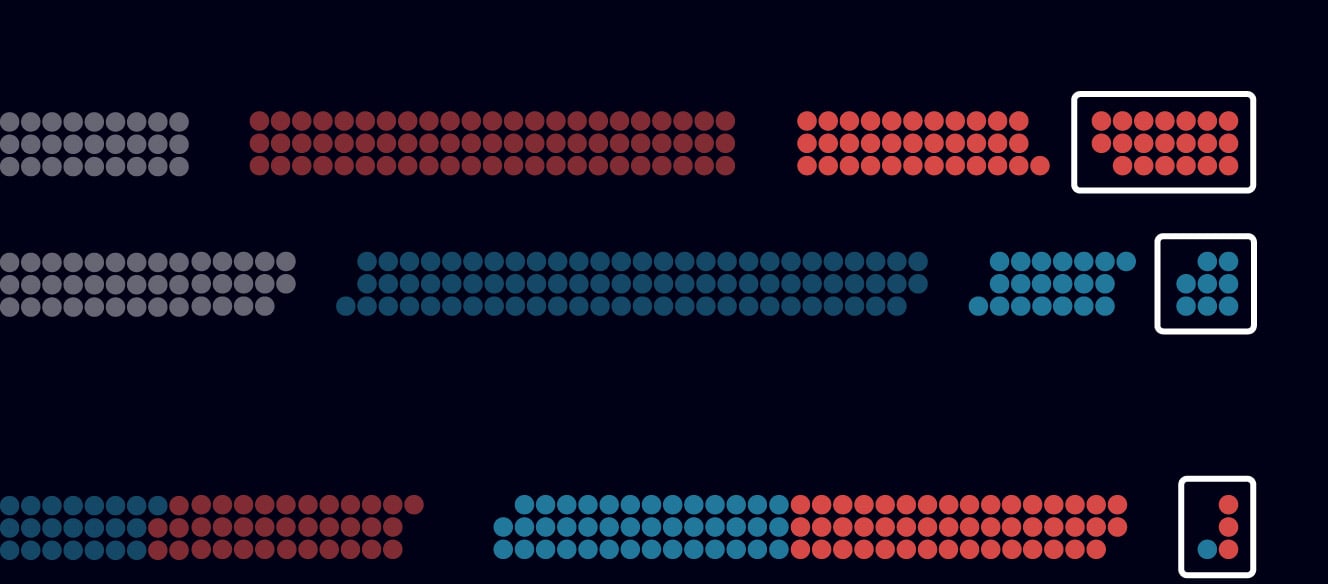
2022 Primaries
No candidates
Uncontested
Noncompetitive
Competitive
20
races
8
2022 General
Colors represent the winner’s party.
Uncontested
Noncompetitive
Competitive
4
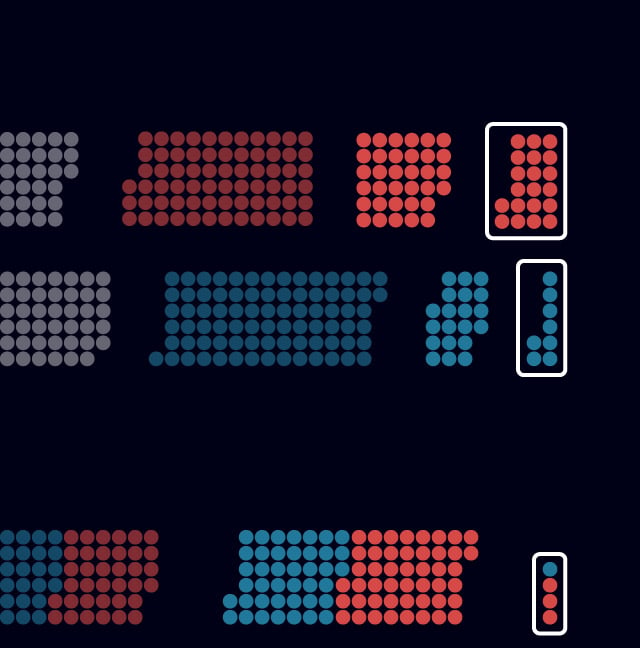
2022 Primaries
No
candidates
Uncontested
Noncompetitive
Competitive
20
races
8
2022 General
Colors represent the winner’s party.
Uncontested
Noncompetitive
Competitive
4
This year, the uneven power of Texas voters is even more pronounced in one corner of the state: Southeast Texas’ state House District 21. That’s the seat of House Speaker Dade Phelan.
Primary election results in HD 21
Phelan’s influence on Texas has been massive. Under his watch, the House has had a hand in imposing major abortion restrictions, lifting the permitting requirement to carry a concealed handgun, pushing the limits of the state’s border enforcement and banning diversity, equity and inclusion at Texas universities. He also oversaw the impeachment of Attorney General Ken Paxton, and a school voucher bill failed to pass out of his chamber in multiple sessions, making him a target of the state’s hard-right Republicans.
This year, 33,686 people voted in his primary race — less than 0.2% of all registered voters in Texas and 26.9% of registered voters in his district.
Primary election results in HD 21
He was forced into a runoff, which will happen May 28. Typically, runoff elections draw even lower turnout than the primaries. In 2020, the average turnout in the 14 House runoff elections was just over 11,500. It’s reasonable to expect that turnout will be higher than average in Phelan’s runoff, given the importance and high interest. But it’s safe to expect that less than 26.9% of voters in Phelan’s district and far less than 1% of Texas voters overall will determine the political future of one of the state’s three most powerful politicians.
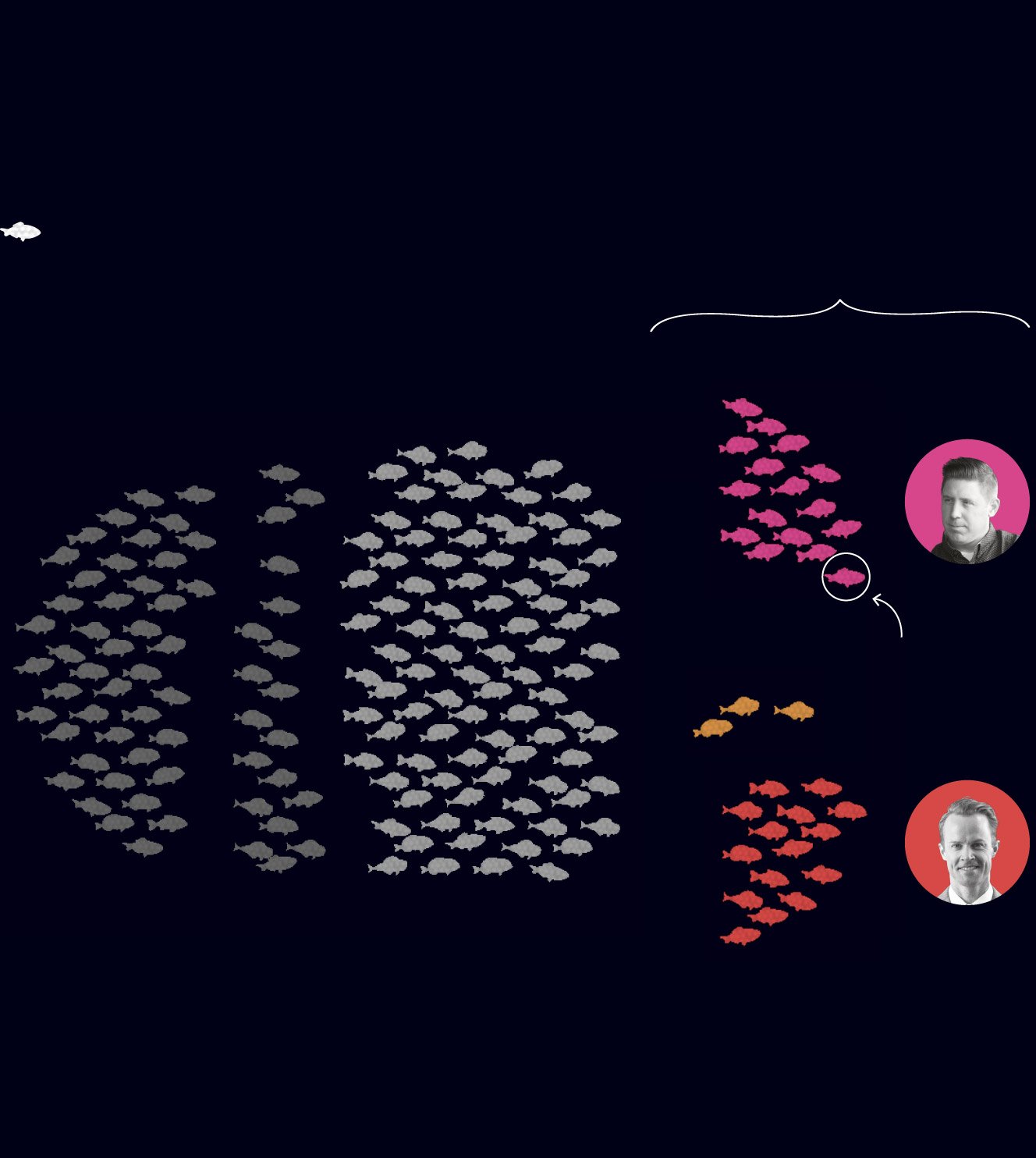
Only a small portion of HD 21 voters could swing a high-profile runoff
Dade Phelan was forced into a runoff against David Covey after a competitive race in the 2024 Republican primary. Only about 1,000 more votes were cast for Covey than Phelan. Although nearly 27% of the district’s registered voters cast a vote, which is much higher than the state’s average, it’s likely that fewer people will vote in the runoff.
Republican primary voters
= 1,000 people in HD 21
33,686
Registered voters
who didn’t vote
People who
voted for Covey
18 or older who
didn’t register
Under 18
years old
92,000
15,589
17,000
About 46,000
People who
voted for Davis
About 1,000 more
people voted for
Covey than Phelan
3,523
People who
voted for Phelan
14,574
Note: Texas House District 21 consists of parts of Jefferson County and all of Jasper and Orange counties. Voter
registration data is calculated using precinct-level data in Jefferson County and county-wide data in Jasper and
Orange counties.
Sources: Texas Legislative Council, Jefferson County election results, Texas Secretary of State, Associated Press

Only a small portion of HD 21 voters could swing a high-
profile runoff
Dade Phelan was forced into a runoff against David Covey after a competitive race in the 2024 Republican primary. Only about 1,000 more votes were cast for Covey than Phelan. Although nearly 27% of the district’s registered voters cast a vote, which is much higher than the state’s average, it’s likely that fewer people will vote in the runoff.
1,000 people
in HD 21
=
About 1,000 more
people voted for
Covey than Phelan
People who
voted for Covey
15,589
People who
voted for Davis
3,523
Republican primary voters
People who
voted for Phelan
33,686
14,574
Registered voters
who didn’t vote
About 92,000
18 or older who
didn’t register
17,000
Under 18 years old
46,000
Note: Texas House District 21 consists of parts of
Jefferson County and all of Jasper and Orange counties. Voter registration data is calculated using precinct-level data in Jefferson County and county-wide data in Jasper and Orange counties.
Sources: Texas Legislative Council, Jefferson County election results, Texas Secretary of State,
Associated Press
This outsized influence of the primary voter has a major impact on Texas politics — and how we’re governed.
First, it means that a much smaller share of voters participate in the state’s most important elections.
During presidential years, the gap between primary turnout and general election turnout is even wider. In 2020, only 25% percent of voters showed up for the primaries (and that was considered high, since there was a competitive presidential primary that year). During the general election, turnout was 67%.
There are two main reasons we have so many uncompetitive races: Geographic polarization and gerrymandering. Research shows that we sort ourselves by politics. If you live in a big urban city, you’re far more likely to vote Democratic. If you live in a rural area, you’re more likely to be a Republican. That means urban districts are highly likely to be blue; and rural districts are usually deep red.
But our lawmakers have exacerbated this problem. Texas has been changing demographically. It’s getting more racially diverse, and more people are living in urban and suburban areas. Late last decade, those shifts caused some state House districts to become more competitive.
Then in 2021, lawmakers redrew the district lines. They packed more conservative voters into competitive GOP-held districts to protect Republican incumbents. And they added some of the nearby neighborhoods that are swinging to the left into districts already held by Democrats. The result was much less competition. In 2018, there were 27 state House races decided by 10 percentage points or fewer. In 2020, there were 26. In 2022, there were only 4.
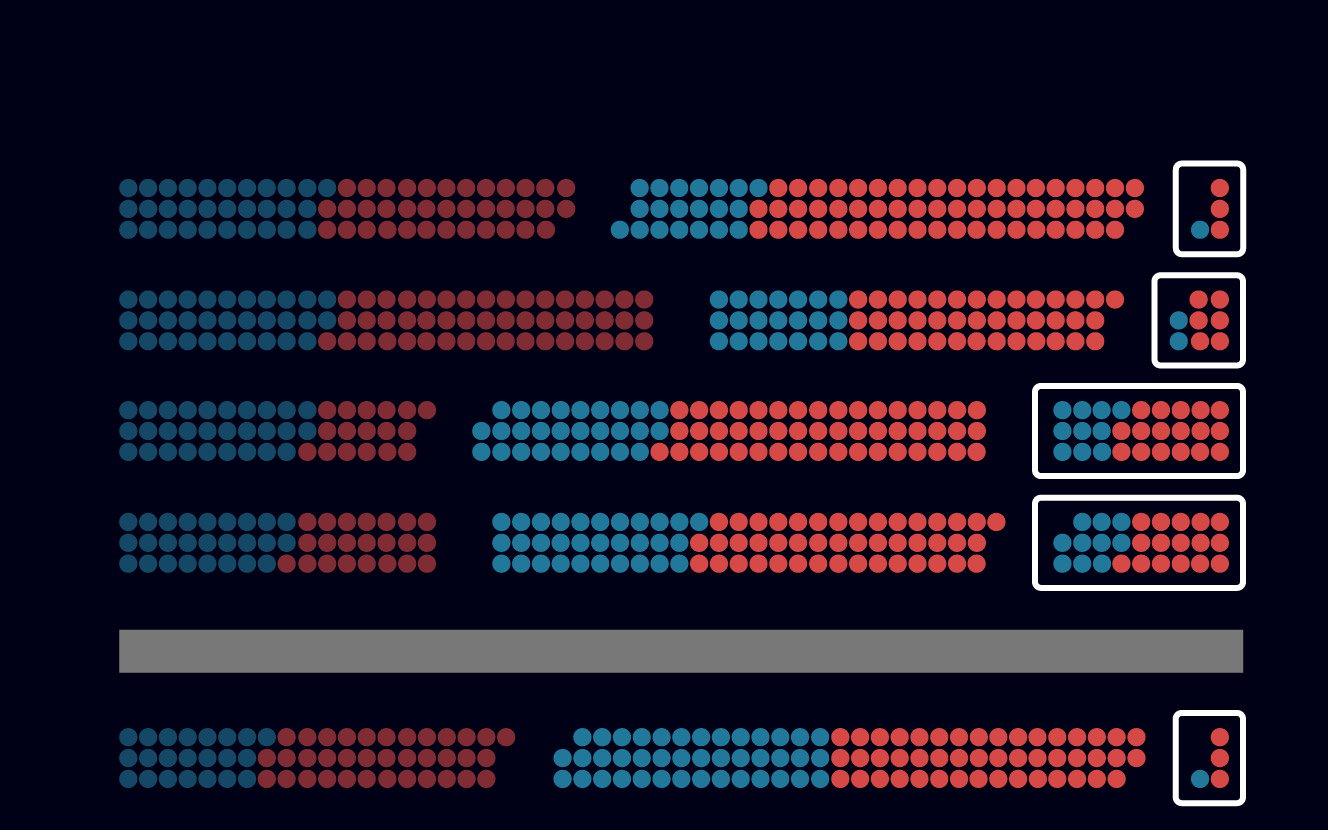
Redistricting created fewer competitive general election House races
Colors represent the winner’s party.
Uncontested
Noncompetitive
Competitive
2014
General
4
races
2016
8
2018
27
2020
26
DISTRICTS WERE REDRAWN
2022
4
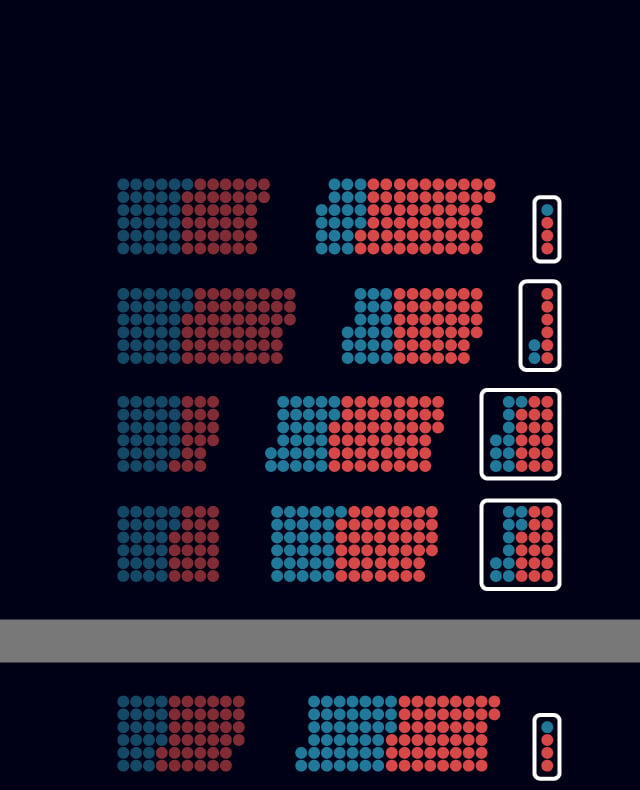
Redistricting created fewer competitive general election House races
Colors represent the winner’s party.
Uncontested
Noncompetitive
Competitive
2014
General
4
races
2016
8
2018
27
2020
26
DISTRICTS WERE REDRAWN
2022
4

How this impacts lawmakers
These trends affect not only who serves in the Texas Capitol, but also the pressures they face and the constituents they need to focus on. The all-important primary electorate is not representative of the state as a whole. Texas is one of the youngest states in the country. But according to GOP election data expert Derek Ryan, more than 30% of the Republican primary voters in 2022 were over the age of 70. Less than 4% of those voters were under the age of 30.
And in the GOP primary, those voters “tend to be far more conservative than the average Texas voter — and notably more conservative than people who vote Republican in November,” said Mark Jones, a political scientist at Rice University. Similarly in the Democratic primary, the voters tend to be more liberal.
Lawmakers are aware of this. If you represent a non-competitive district, you know your seat is probably safe in the next general election. Recent history shows that it’s rare for a district to vote for one party at the top of the ballot, like the presidential race, and a different party in a legislative race. In 2022, that happened only twice — and one of those races was uncontested.
But any House member could face a serious and well-financed primary challenger. So for the sake of their political future, the voters most House members need to keep happy are the more activist and polarized primary voters.
That may help explain why policies that are popular with the broad public might be nonstarters for lawmakers worried about primary challengers. A 2023 poll showed that 76% of Texas voters supported raising the age to purchase a gun from 18 to 21. Such a proposal went basically nowhere in the Texas House.
“Virtually all the Republican House members and Democratic House members don’t have to worry about centrist voters,” Jones said. “They are not going to affect their political career.”
The same is true in the Senate, where only one out of 31 general election races was decided by less than 10 points in 2022, and the U.S. House, where only two out of 36 were close.
The lesson for voters? If you want to have a say in who represents you in Austin, you should vote in the primaries. It might be your only chance.
ABOUT THE DATA
Election results data is from the Texas Secretary of State. District by district population, voting age population and turnout data is from Texas Legislative Council based on their analysis using U.S. Census 2020 data. When comparing general and primary numbers, it’s important to remember there are a maximum of 150 possible races in each of the Republican and Democrat primaries in the Texas House. In the general election, there’s a maximum possibility of 150 races total.
Disclosure: Rice University has been a financial supporter of The Texas Tribune, a nonprofit, nonpartisan news organization that is funded in part by donations from members, foundations and corporate sponsors. Financial supporters play no role in the Tribune's journalism. Find a complete list of them here.